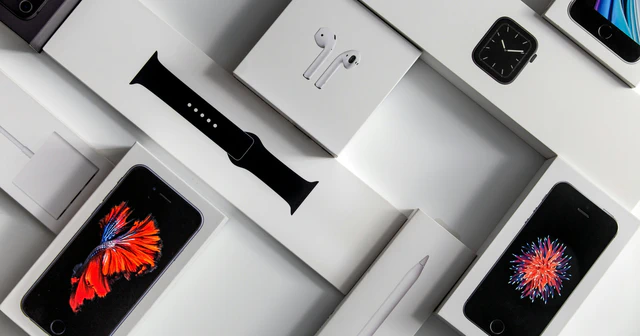How I (un)manage time as a neurodivergent

Since I learned I was neurodivergent, I’ve had to reconsider what I thought I knew about productivity. Popular productivity methods become popular because they resonate with how most brains work. Since neurodivergent brains work differently, these productivity methods may end up causing more stress rather than managing it.
For example, many productivity methods depend on your ability to manage time. The idea is often that you create a detailed schedule for your day to make sure you make the most of it—sometimes with every minute accounted for.
In this article, I’ll share why I’ve stopped trying to “manage” time, and how I’ve adapted my system to better suit my brain.
The cost of managing time
Like many other neurodivergent people, I struggle with time blindness. Time has a habit of running away from me. I can only reliably tell how much time has passed if I’m actively looking at my watch.
It’s like I was hiking through an unknown forest without any trails. I only know where I’m going as long as I use the compass to orient myself. If I put the compass away, I’ll quickly lose track of where I am.
If you have ADHD, this probably sounds familiar to you. As highlighted by How to ADHD, research has found that 98% of people with ADHD report they struggle with time management, while only 8% of the general population said they struggle with time management.
As a result, time-sensitive tasks drain my mental resources at a faster rate than other tasks would.
For example, if I commit to being somewhere during the afternoon, I’ll struggle to get things done during the entire morning. I’ll obsessively check the time to make sure I’m on time, even if the appointment isn’t until 5 hours from now.
Rather than trying (and failing) to manage time well, I started asking myself, do I really need to? Instead of relying on techniques that aren’t suited for my brain, how can I devise a system that is?
No one escapes time (management)
I wish I could tell you about the life-changing magic of living without a calendar, but let’s face it: Unless you’re completely removed from modern society, you’ll eventually have to accept that you’ll need to manage time to some extent.
In the workplace, you may have client meetings, daily stand-ups, and other activities that require people to be at the same place at the same time.
If you’re a student, you may have exams that require you to be in a certain room at a certain time. You probably need to hand in your assignments at the same time as your classmates.
Outside work, you’ll encounter dentist appointments, parent-teacher meetings, and other commitments you need to honor.
The point is—for most of us, eliminating the need to manage time just isn’t going to happen. But we don’t need to make it worse than it is.
My strategy for managing time boils down to two things: minimizing the number of time-sensitive activities and honoring the ones that remain.
Sounds simple when you put it like that, right? Except it’s not.
Minimizing the number of time-sensitive activities
Most likely, you’ll still going to need that calendar. But that doesn’t mean you can’t question what goes in it. You can still be mindful of not adding more calendar events than you need to.
I want to share some strategies I’ve found helpful when creating more space in my calendar.
Reduce meetings in the workplace
Let’s be honest, neurodivergent or not, most people would prefer fewer meetings at work. In 2017, Harvard Business Review encouraged companies to Stop the Meeting Madness. A study by Otter.ai suggests that almost a third of meetings are unnecessary.
If you feel uncomfortable asking your manager to let you attend fewer meetings, consider that reducing the number of meetings is also a financial incentive for the company. Shopify even built a Meeting Cost Calculator that encourages employees to think twice before scheduling a meeting.
In the cases where I need synchronous communication, I’ll ask a colleague if they’d be willing to jump into an ad-hoc call whenever they’re available. These calls often end up being shorter and more focused than a scheduled meeting.
Embrace asynchronous communication
Being able to work remotely has been a blessing in managing my ADHD (and my autism for that matter). In fact, one of the reasons also happens to be an essential part of a successful remote work culture.
In short, asynchronous communication means that you don’t need to be at the same place at the same time to communicate. You can send a message, and the recipient can respond when it suits them.
The GitLab Handbook—an excellent resource on remote work practices—has this to say about working asynchronously:
In an asynchronous company, team members are given agency to move projects forward on a schedule that suits them. At GitLab, we measure results, not hours. This means that people are free to achieve results when it best suits them.
I don’t know whether they considered the benefits from an accessibility perspective when they wrote this, but being able to work in my own time makes a world of difference.
Honoring time-sensitive commitments
Let’s assume I’ve managed to reduce the number of time-sensitive tasks and meetings to the bare minimum. The next challenge is being where I need to be when I need to be there.
In practice, this means putting in safeguards that help me remember when I need to be somewhere.
Consolidate calendars
I use three different calendars from three different providers. Google for work, Fastmail for personal, and Apple Calendar for sharing with my partner.
Needless to say, for someone who’s already struggling with managing time in general, using three different apps isn’t going to make it easier. If I need to look in three different places to get a sense of what the day looks like, I’ll likely miss something.
I use Fantastical to consolidate all calendars into one app, which lets me manage calendar events in one place.
Fantastical is also available on all devices I use, which means I can see what my day looks like no matter where I am. Seeing my next meeting on my Apple Watch is particularly helpful.
I’m far from being a calendar power user. In fact, I actively choose not to be. My calendar is a necessary evil, and I don’t want to spend more time in it than I need to.
Another massive benefit of consolidating calendars is that it lets you configure notifications in one place.
Time-sensitive notifications
Notifications may serve multiple purposes—for example, to let you know when you have a new email or when someone replies to your tweet. Here, I’m going to focus on time-sensitive notifications.
As the name suggests, time-sensitive notifications are delivered at a certain time rather than at a certain event. Ideally, they allow you to avoid constantly watching the time (I say ideally because even with notifications, I still don’t fully trust myself with time).
It may sound obvious, but the challenge with time-sensitive notifications is that they’re only helpful if delivered at the right time. If I set a notification too early, I’ll convince myself I have time to finish what I’m doing. I’ll dismiss the notification and immediately forget what I was supposed to do.
As much as I can, I configure notifications so that I can act the moment I see them. That way, I can’t negotiate with myself as easily. If I snooze a notification, that’s probably a sign I should adjust the time of the notification.
Reminders for virtual meetings
I mostly rely on notifications to be where I need to be, and they work for the most part. However, I’ve found virtual meetings to be a special type of beast that needs extra attention.
Usually, I have some buffer to get ready for appointments in the real world. But since I work remotely, for the most part, I’m already where I need to be for the meeting. And to be clear:
That doesn’t make it easier.
I’ve found that regular notifications aren’t enough for virtual meetings. I’ll still configure a notification 10 minutes before to make sure I’m at my computer. But once the meeting is about to start, I need something more powerful.
In Your Face is an app for macOS that hijacks your entire screen and displays the link to join the call. I honestly don’t know how I’d get by without it.
Reducing time-induced anxiety
In a way, the strategies I’ve mentioned so far are mainly to help me keep my promises. But even if I limit the number of meetings and configure proper notifications, I still don’t fully trust myself to make it in time.
Knowing you have to be somewhere but not feeling like you’re in control is a recipe for anxiety.
Luckily, I’ve discovered a few strategies that help me reduce the anxiety that comes with time-sensitive commitments.
Schedule meetings and appointments early in the day
I’m told that neurotypical people can tell, with relative ease, whether 20 minutes or 2 hours have passed. As if they can somehow sense time as it passes. As soon as I look away from the clock, I lose track of what time it is.
As a result, if I know I have a meeting in the afternoon, I’ll most likely have a difficult time focusing on anything else until the meeting is over. I’d constantly check the time to make sure I wouldn’t be late.
Whenever I can, I schedule appointments and meetings in the morning so that I can free up my mind for the rest of the day. This isn’t always possible, but I try to keep it in mind when I have the option.
Arrive early and wait at a café
If I need to travel for an appointment, I try to arrive well ahead of time and find a café nearby. This way, I can still work or read a book right up until the time of the appointment.
And if I do lose track of time, chances are it’ll be alright since I won’t need to wait for the next bus or train to arrive.
Enable time announcements
Some devices, such as Macbooks and Apple Watch, have an accessibility feature where a voice tells you the time in regular intervals—for example, every hour.
A friend recommended that I try this out. I admit I was skeptical at first, but I’ve found it helpful to keep track of time.
If you’re an Apple user, see How to announce time on macOS and Apple Watch.
Summary
Most, if not all, advice on time management focuses on getting more things done by making the most out of the hours (minutes even) of the day.
Of course, I recognize that neurotypical people also would benefit from being more intentional with their calendars. The difference that I see is that the motivation for neurotypicals seems to be to optimize productivity—to get more things done—than to improve their mental health.
As a neurodivergent person, managing time is an uphill battle that impacts my well-being. After countless attempts to improve something I struggle to perceive in the first place, I’ve accepted that it may not be a battle I can win.
Instead of forcing myself into a system that doesn’t work for me, I’ve started to explore productivity methods that don’t rely on my ability to manage time.
If this article resonated with you, I suggest you watch Why you should NOT plan out all your time 🕰️ next.
If you have ADHD and want to find productivity methods that work better for you, I also highly recommend Extra Focus: The Quick Start Guide to Adult ADHD by Jesse J. Anderson (and his video on YouTube).


